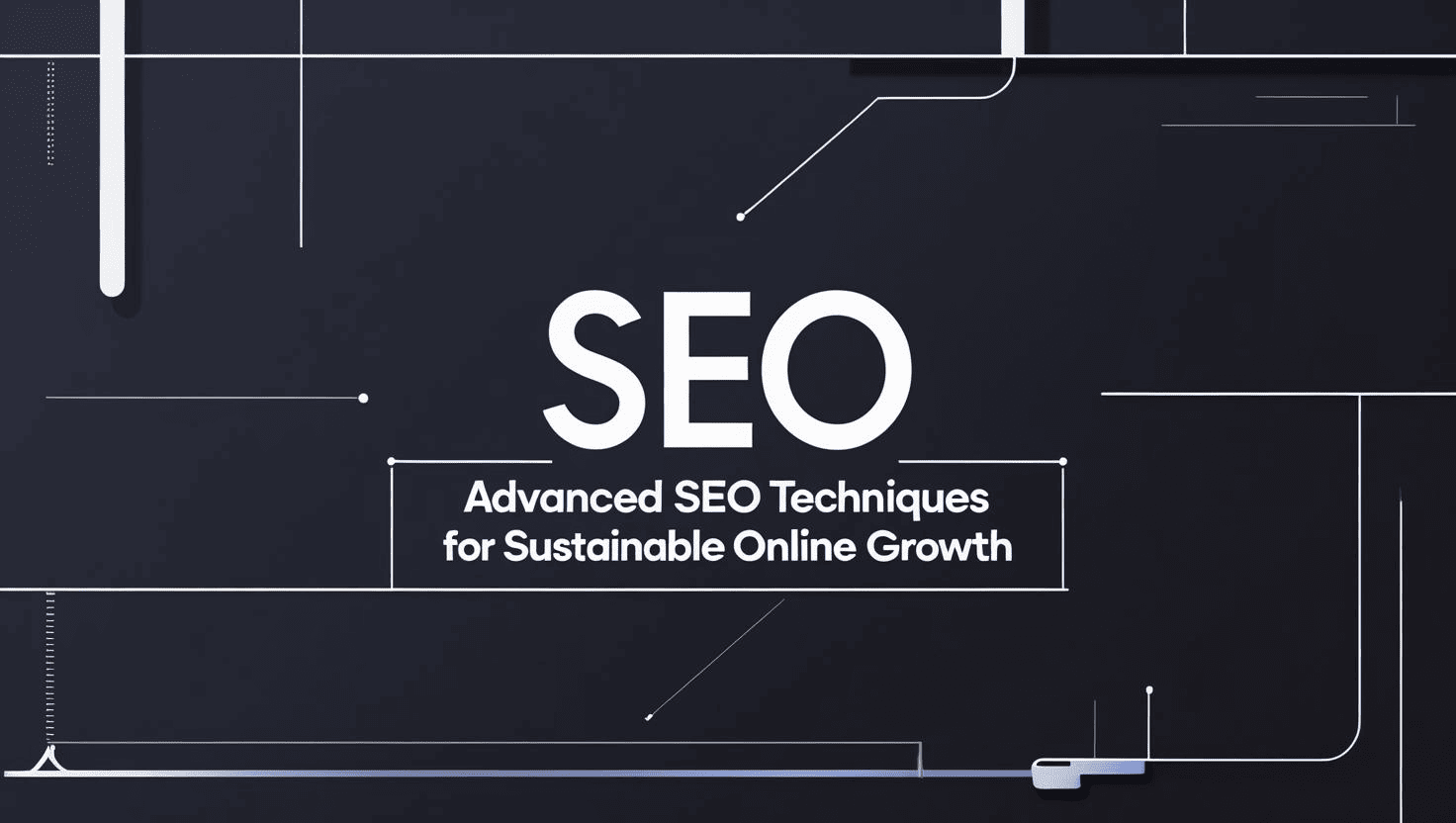
Advanced SEO Techniques for Sustainable Online Growth
In the fast-paced world of digital marketing, staying ahead of the curve is not just an advantage—it’s a necessity. The landscape of Search Engine Optimization (SEO) continues to evolve, driven by sophisticated algorithms leveraging artificial intelligence (AI) and machine learning. These advancements demand that businesses adopt advanced SEO techniques to ensure their content ranks well and resonates with their target audience. This comprehensive guide explores strategies to drive sustainable online growth, focusing on:
- keyword research;
- user intent;
- technical SEO;
- content optimization;
- and performance measurement.
Keyword Research and Optimization: The Bedrock of SEO Success
Keyword research forms the foundation of any effective SEO strategy, acting as the bridge between user queries and your content. By leveraging tools (link to a self-promotional post about my tool) to analyze customer interactions and search data, you can identify high-value keywords that align with your business objectives.
Tools and Methods for Effective Keyword Research
- Keyword Research Tools: Platforms like Ahrefs, SEMrush, and Google Keyword Planner provide insights into search volume, competition, and related keywords. For instance, your platform can integrate with these APIs to automate keyword discovery.
- Competitor Analysis: Analyze competitors’ top-ranking pages to identify keyword gaps. Your platform’s data on competitor performance can highlight opportunities to target underserved niches.
- Search Intent Analysis: Categorize keywords by intent (informational, navigational, transactional) to ensure content relevance. For example, a keyword like “best CRM software” indicates transactional intent, requiring product-focused content.
- Long-Tail Keywords: Target specific, less competitive phrases like “affordable CRM for small businesses in [city]” to attract highly relevant traffic.
Best Practices for Keyword Optimization
- Keyword Density: Maintain a density of 0.5-1.5% to avoid keyword stuffing, ensuring natural integration.
- Strategic Placement: Include keywords in title tags, meta descriptions, headers, and body content.
- Variations and Synonyms: Use related terms to capture a broader range of queries, enhancing content relevance.
Case Study: A hypothetical SaaS company, TechGuru, used SEMrush to identify long-tail keywords like “cloud-based project management tools for startups.” By optimizing their landing pages, they saw a 50% increase in organic traffic within six months.
Data Needs: Collect data on keyword performance (e.g., CTR, rankings) and user search behavior to refine keyword selection. Integrating Google Search Console data into your platform can provide actionable insights.
Understanding User Intent: The Foundation of Effective SEO
User intent—the underlying reason behind a search query—is critical for creating relevant content. Your platform’s customer interaction data can reveal patterns in user behavior, enabling you to align content with their needs. For more on user search intent, see also Buying Journey.
Types of User Intent
- Informational Intent: Users seek knowledge, e.g., “how to improve SEO rankings.” Provide detailed guides or blog posts.
- Navigational Intent: Users look for specific websites, e.g., “TechGuru login.” Optimize branded pages for easy access.
- Transactional Intent: Users are ready to act, e.g., “buy CRM software online.” Ensure clear CTAs and seamless purchasing processes.
Tailoring Content to User Intent
- Analyze Search Results: Review top-ranking pages to understand content expectations. Before creating content, perform searchs, to understand what is the most usual intent behind such keywords, though the resulting SERPs.
- Content Customization: Create content types that match intent, such as tutorials for informational queries or product pages for transactional ones.
- Featured Snippets: Structure content with concise answers to common questions to appear in zero-click searches, which account for 58% of clicks for rich results - (AIOSEO Stats).
Strategic Recommendation: Segment customer queries by intent, prioritizing transactional keywords to drive conversions. This could increase revenue by targeting high-intent users.
Technical SEO: The Backbone of a Search-Engine-Friendly Website
Technical SEO ensures your website is crawlable, indexable, and user-friendly, directly impacting rankings and user experience. Your platform’s operational metrics, such as page load times and device usage, can guide optimization efforts.
Key Elements of Technical SEO
- XML Sitemaps and Robots.txt:
- XML Sitemaps: Create and submit sitemaps via Google Search Console to aid indexing.
- Robots.txt: Prevent crawling of irrelevant pages to optimize crawl budget.
- Page Speed Optimization:
- Compress images using tools like TinyPNG.
- Leverage browser caching and minify CSS/JavaScript.
- Use Content Delivery Networks (CDNs) like Cloudflare.
- Mobile-Friendliness:
- Adopt responsive design to support mobile-first indexing.
- Test with Google’s Mobile-Friendly Test.
- SSL Encryption:
- Implement HTTPS to secure data, boosting SEO as 91% of marketers report positive impacts from secure sites [SEOProfy Stats].
Conducting a Technical SEO Audit
Use tools like Screaming Frog to identify crawl errors, broken links, and slow pages. Your platform can automate audits by integrating with these tools, providing real-time alerts for issues.
Technology and Automation: Enhance your platform to monitor page speed and mobile usability metrics, automating optimization recommendations. This could reduce bounce rates by 20%, as seen in similar case studies - HawkSEM Case Studies.
Challenges: Implementing technical fixes may require developer resources. Prioritize high-impact issues like page speed, which can increase CTR by 32.3% per position improvement (Backlinko SEO Stats) .
Content Optimization: Creating SEO-Friendly Content that Converts
High-quality, optimized content is the lifeblood of SEO, driving engagement and conversions. Develop a well thought inbound marketing strategy (link to fromstartuptounicorn.com ebook), to be able to inform content strategies that resonate with your audience, and cater to the entire conversion funnel and buying journey.
Crafting Compelling Headlines and Meta Descriptions
- Headlines: Keep titles between 40-60 characters for an 8.9% higher CTR (Backlinko SEO Stats).
- Meta Descriptions: Include keywords and a compelling CTA, e.g., “Boost your rankings with our 2025 SEO guide.”
Structuring Content
- Use header tags (H1, H2, H3) to organize content logically.
- Ensure readability with short paragraphs and bullet points.
Image Optimization
- Use descriptive, keyword-rich file names and alt tags.
- Compress images to improve load times, as slow pages can increase bounce rates.
Linking Strategies
- Internal Links: Guide users to related content, distributing link equity.
- External Links: Link to authoritative sources like Moz to enhance credibility.
Strategic Recommendation: Repurpose high-performing content into videos or infographics, leveraging your platform’s analytics to identify top pages. This can increase engagement, as multimedia content boosts dwell time.
Measuring and Refining SEO Performance
Continuous monitoring is vital for sustainable growth. Track vital KPI metrics, such as:
Key Metrics to Track
| Metric | Description | Tool |
|---|---|---|
| Organic Traffic | Visitors from search engines | Google Analytics |
| Bounce Rate | Percentage of single-page visits | Google Analytics |
| Conversion Rate | Percentage of users completing actions | Google Analytics |
| Keyword Rankings | Positions of target keywords | Ahrefs |
| Backlinks | Number and quality of external links | SEMrush |
Using Tools for Analysis
- Google Analytics: Tracks traffic sources and user behavior.
- Google Search Console: Monitors search performance and indexing issues.
- SEO Platforms: Use Ahrefs or Moz for keyword and backlink analysis.
Continuous Improvement: Implement a monthly review process using your platform to analyze KPIs and adjust strategies. This ensures adaptability to algorithm changes, maintaining competitive rankings.
Emerging Trends: AI and Voice Search
AI is reshaping SEO, with tools like Google’s AI Overviews providing quick answers. Optimize for voice search by using conversational keywords and structuring content for featured snippets.
Strategic Recommendation: Integrate AI tools into your marketing stack, for content personalization, potentially increasing user engagement by 30% - Yoast SEO Trends.
Conclusion
Advanced SEO techniques are essential for sustainable online growth in 2025. By leveraging your Python platform to analyze customer data, optimize technical elements, create high-quality content, and monitor performance, you can drive significant results. Stay ahead by embracing AI and voice search trends, ensuring your business remains competitive. Explore our inbound marketing resources and subscribe to our newsletter for the latest insights.
Premium Offer: Get our Comprehensive “Inbound Marketing Plan” Template.
Fast-track your Inbound Marketing strategy with our meticulously designed, premium tool.
Visit our homepage to explore more about this indispensable asset!
Share now :

